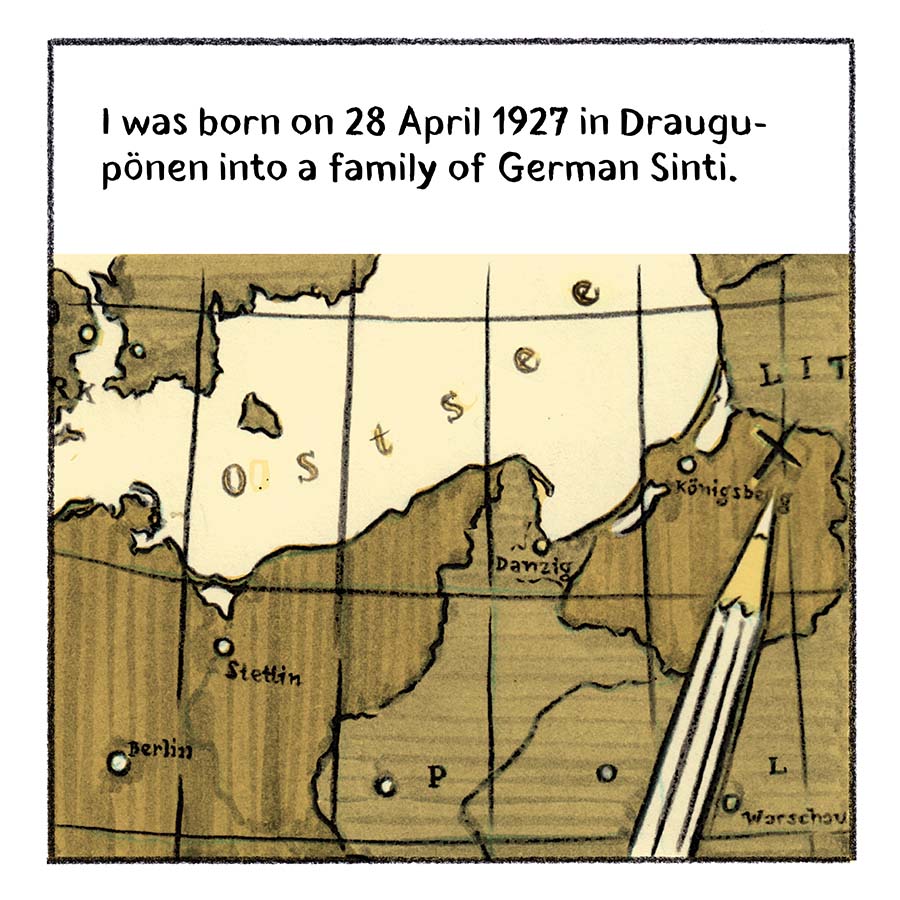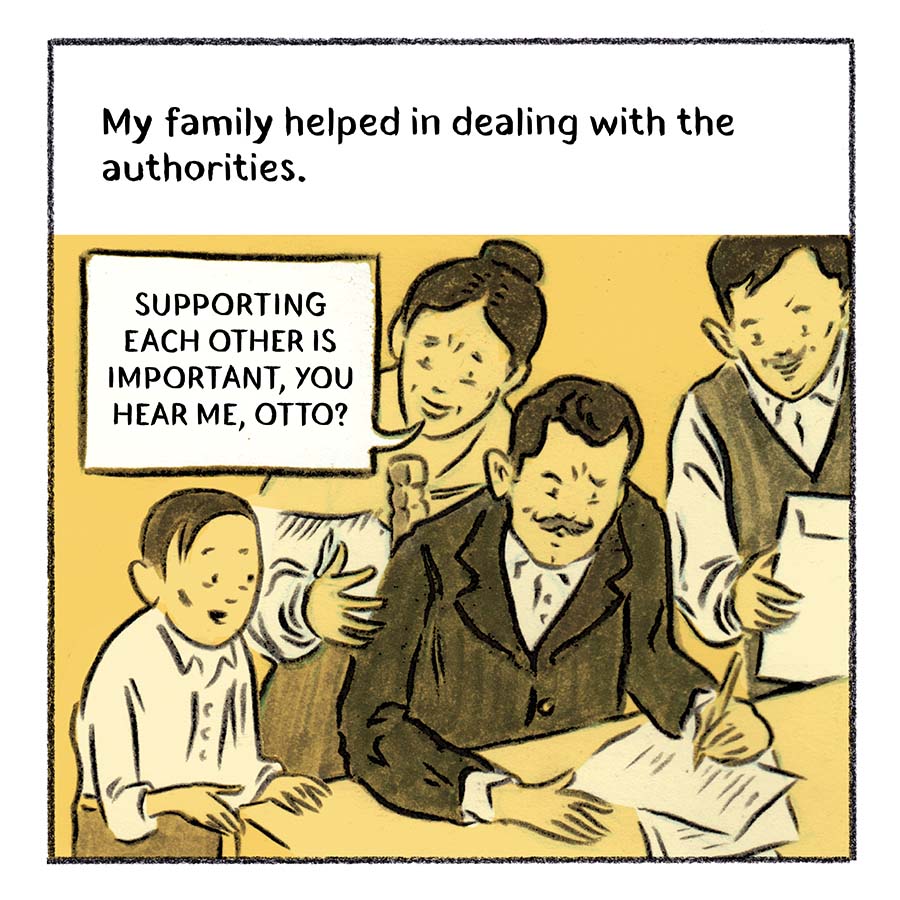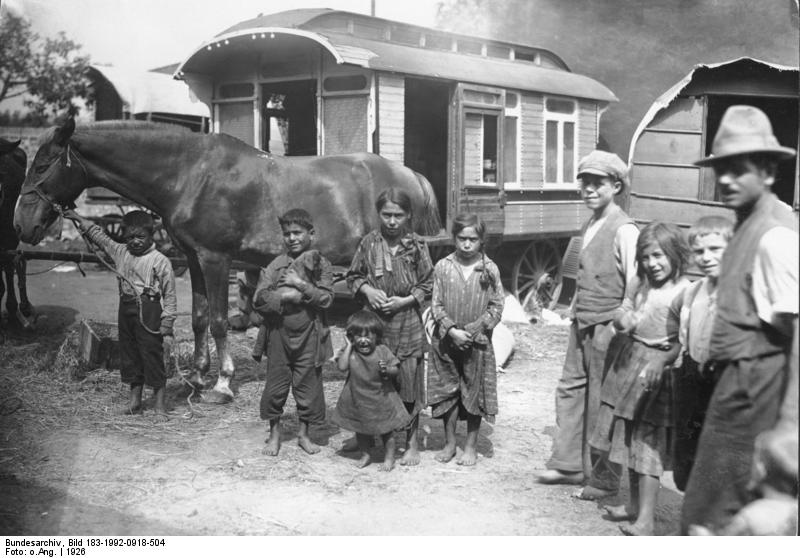




Sinti and Roma - A Clarification of Terminology
Sinti are members of the minority who live mainly in Western and Central Europe, while Roma tend to live in Eastern and South-Eastern European countries. Around twelve million Sinti and Roma live in Europe today. This makes them the largest and most widely discriminated against minority in Europe. They are still fighting against everyday racism, prejudice based on stereotypes and discrimination rooted in history. Sinti and Roma is not only the politically correct term, but also appears in historical sources from the 18th century and is now officially used by international organisations such as the UN or the Council of Europe. European history has influenced the Sinti and Roma minority - presumably as early as the 13th and 14th centuries, Roma from India and the region of present-day Pakistan came to Central, Western and Northern Europe. Sinti and Roma never had their own state or government that stood up for them.
Sinti are members of the minority who live mainly in Western and Central Europe, while Roma tend to live in Eastern and South-Eastern European countries. Around twelve million Sinti and Roma live in Europe today. This makes them the largest and most widely discriminated against minority in Europe. They are still fighting against everyday racism, prejudice based on stereotypes and discrimination rooted in history. Sinti and Roma is not only the politically correct term, but also appears in historical sources from the 18th century and is now officially used by international organisations such as the UN or the Council of Europe. European history has influenced the Sinti and Roma minority - presumably as early as the 13th and 14th centuries, Roma from India and the region of present-day Pakistan came to Central, Western and Northern Europe. Sinti and Roma never had their own state or government that stood up for them.










"Gypsy Law" of 1926
Even before the National Socialist takeover, Sinti and Roma experienced and suffered various forms of exclusion. Their living situation was exacerbated by the "Law to Combat Gypsies, Vagabonds and The Workshy" (Gesetz zur Bekämpfung von Zigeunern, Landfahrern und Arbeitsscheuen) of 16 July 1926. In this so-called Gypsy Law, the Bavarian Parliament stipulated that Sinti and Roma who did not have a permanent job could be placed in a workhouse for up to two years. In addition, "gypsies and vagabonds" with a criminal record could be expelled from certain municipalities. For the first time, the law embraced the ideas of racial theory (Rassenkunde), which also became part of Nazi ideology. In addition, the term "work-shy" (arbeitsscheu) was used as a battle cry in the Nazi extermination strategy and served as the basis for the persecution and incarceration of Sinti and Roma in concentration camps. The "Gypsy Law" of 1926 provided the police with legal means to segregate or even imprison Sinti and Roma without them having committed any unlawful acts.
Sinti and Roma in front of a caravan in Berlin, 1926.

Bundesarchiv, Bild 183-1992-0918-504 / Unbekannt / CC-BY-SA 3.0
© Bundesarchiv, Archivtitel, 1926
Even before the National Socialist takeover, Sinti and Roma experienced and suffered various forms of exclusion. Their living situation was exacerbated by the "Law to Combat Gypsies, Vagabonds and The Workshy" (Gesetz zur Bekämpfung von Zigeunern, Landfahrern und Arbeitsscheuen) of 16 July 1926. In this so-called Gypsy Law, the Bavarian Parliament stipulated that Sinti and Roma who did not have a permanent job could be placed in a workhouse for up to two years. In addition, "gypsies and vagabonds" with a criminal record could be expelled from certain municipalities. For the first time, the law embraced the ideas of racial theory (Rassenkunde), which also became part of Nazi ideology. In addition, the term "work-shy" (arbeitsscheu) was used as a battle cry in the Nazi extermination strategy and served as the basis for the persecution and incarceration of Sinti and Roma in concentration camps. The "Gypsy Law" of 1926 provided the police with legal means to segregate or even imprison Sinti and Roma without them having committed any unlawful acts.
Sinti and Roma in front of a caravan in Berlin, 1926.

Bundesarchiv, Bild 183-1992-0918-504 / Unbekannt / CC-BY-SA 3.0
© Bundesarchiv, Archivtitel, 1926

Discrimination against Sinti and Roma before World War II
Even though many German Sinti and Roma had been well integrated into the majority society for a long time, their discrimination and persecution was not an invention of the National Socialists. The stereotypes against Sinti and Roma that exist today can be traced back to centuries of exclusion. There was massive discrimination in Europe already in the 16th century - members of the minority were expropriated, expulsed and even murdered. At that time, this was legally sanctioned in many European countries. Sinti and Rom were forbidden to practise a trade, to settle down or to purchase land. This involuntary lifestyle was later held against the Sinti and Roma: the narrative of their alleged inability to settle down became increasingly widespread. In the Age of Enlightenment, attempts were made to subject Sinti and Roma to greater state control. Such forced assimilation policy resulted, among other things, in forced sedentarization, marriage bans and the prohibition of Romani, their own language. In addition, children could be forcibly placed in state care for assimilation purposes. Following the foundation of the German Reich in 1871, the establishment of the "Intelligence Service for Gypsies" in 1899 marked the beginning of a systematic, nationwide police registration of Sinti and Roma.
Even though many German Sinti and Roma had been well integrated into the majority society for a long time, their discrimination and persecution was not an invention of the National Socialists. The stereotypes against Sinti and Roma that exist today can be traced back to centuries of exclusion. There was massive discrimination in Europe already in the 16th century - members of the minority were expropriated, expulsed and even murdered. At that time, this was legally sanctioned in many European countries. Sinti and Rom were forbidden to practise a trade, to settle down or to purchase land. This involuntary lifestyle was later held against the Sinti and Roma: the narrative of their alleged inability to settle down became increasingly widespread. In the Age of Enlightenment, attempts were made to subject Sinti and Roma to greater state control. Such forced assimilation policy resulted, among other things, in forced sedentarization, marriage bans and the prohibition of Romani, their own language. In addition, children could be forcibly placed in state care for assimilation purposes. Following the foundation of the German Reich in 1871, the establishment of the "Intelligence Service for Gypsies" in 1899 marked the beginning of a systematic, nationwide police registration of Sinti and Roma.














